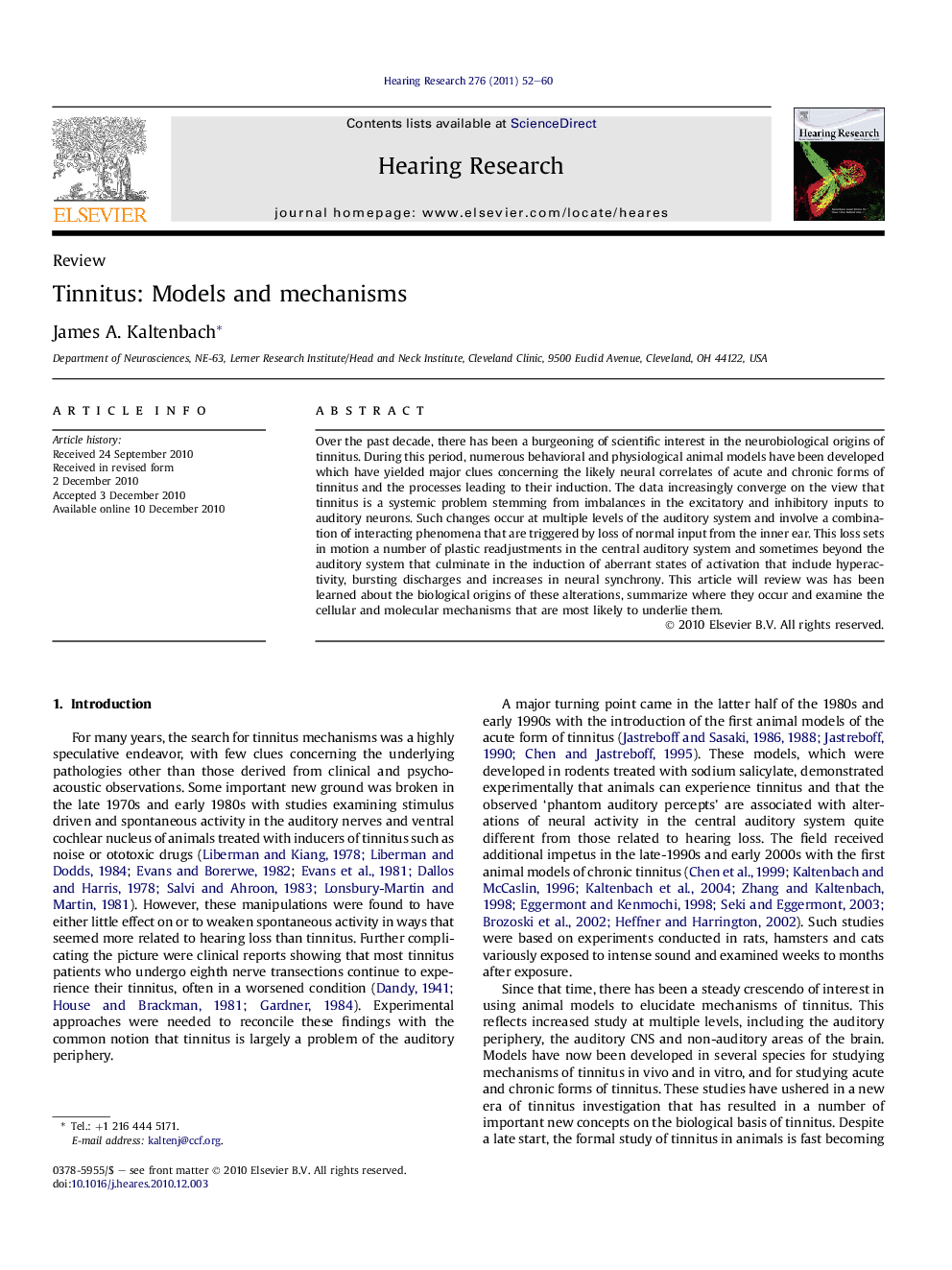| Article ID | Journal | Published Year | Pages | File Type |
|---|---|---|---|---|
| 4355572 | Hearing Research | 2011 | 9 Pages |
Over the past decade, there has been a burgeoning of scientific interest in the neurobiological origins of tinnitus. During this period, numerous behavioral and physiological animal models have been developed which have yielded major clues concerning the likely neural correlates of acute and chronic forms of tinnitus and the processes leading to their induction. The data increasingly converge on the view that tinnitus is a systemic problem stemming from imbalances in the excitatory and inhibitory inputs to auditory neurons. Such changes occur at multiple levels of the auditory system and involve a combination of interacting phenomena that are triggered by loss of normal input from the inner ear. This loss sets in motion a number of plastic readjustments in the central auditory system and sometimes beyond the auditory system that culminate in the induction of aberrant states of activation that include hyperactivity, bursting discharges and increases in neural synchrony. This article will review was has been learned about the biological origins of these alterations, summarize where they occur and examine the cellular and molecular mechanisms that are most likely to underlie them.
► This article reviews behavioral and physiological models of tinnitus developed over the past decade. ► The principal themes that have emerged from studies conducted in these models will also be reviewed. ► Emphasis is placed on the neural correlates of acute and chronic forms of tinnitus. ► The role of plasticity and other mechanisms in the induction of tinnitus-related changes in neural activity will also be reviewed.
